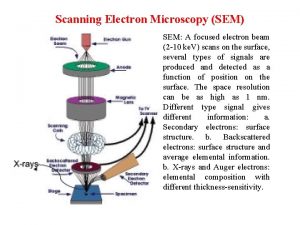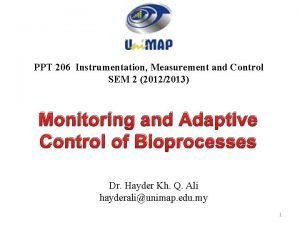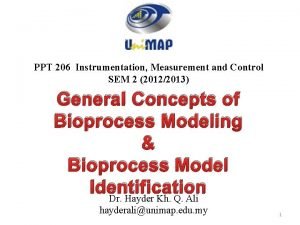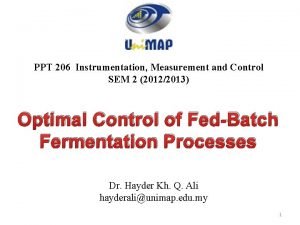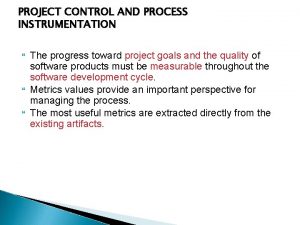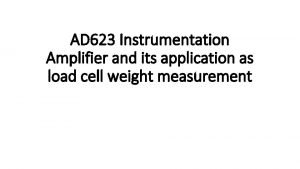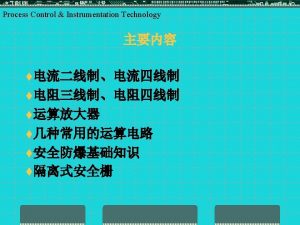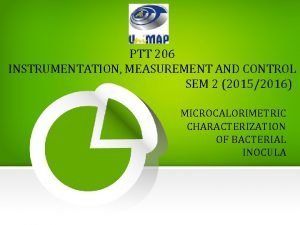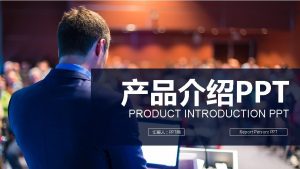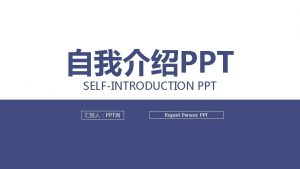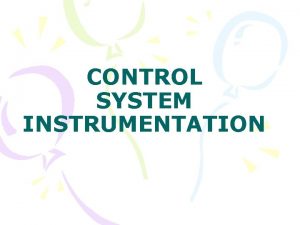PPT 206 Instrumentation Measurement and Control SEM 2









- Slides: 9

PPT 206 Instrumentation, Measurement and Control SEM 2 (2012/2013) Monitoring and Adaptive Control of Bioprocesses Dr. Hayder Kh. Q. Ali hayderali@unimap. edu. my 1

Specific problems of bioprocess control Over the past several decades, biotechnological processes have been increasingly used industrially, which is attributed to several reasons (improvement of profitability and quality in production industries, etc. ). The problems arising from this industrialization are generally the same as those encountered in any processing industry. In the field of bioprocessing, almost all of the problems that are being tackled in automatic control. Thus, system requirements for supervision, control and monitoring of the processes in order to optimize operation or detect malfunctions are on the increase. Two principal reasons explain this situation: 2

– First of all, biological processes are complex processes involving living organisms whose characteristics are, by nature, very difficult to apprehend. These related to the consequence of metabolic changes of biomass or even genetic modifications that could not be foreseen and observed from a macroscopic point of view. 3

– The second major difficulty is the almost systematic absence of sensors providing access to measurements necessary to know the internal functioning of biological processes. The majority of the key variables associated with these systems (concentration of biomass, substrates and products) can be measured only using analyzers on a laboratory scale – where they exist – which are generally very expensive and often require heavy and expensive maintenance. Thus, the majority of the control strategies used in industries are very often limited to indirect control of fermentation processes by control loops of the environmental variables such as dissolved oxygen concentration, temperature, p. H, etc. 4

A schematic view of monitoring and control of a bioprocess Use of a computer to monitor and control a biological process is represented schematically in Figure 1. 1. In the situation outlined, the actuator is the feed rate of the reactor. Its value is the output of the control algorithm, which uses the information of the available process. This information regroups, on the one hand, the state of the process to date (i. e. measurements) and, on the other hand, available a priori knowledge (for example, in the form of a “material balance” model type) relative to a dynamic biological process and mutual interactions of different process variables. 5

Fed-batch fermentation process 10 g/l of glucose Initial conc. of glucose: 10 g/l 4 g/l of glucose After 48 h of fermentation process 6

Modeling and identification of bioprocesses The dynamic model concept plays a central role in automatic control. Within the framework of bioprocesses, the most natural way to determine the models that will enable the characterization of the process dynamics is to consider the material balance (and possibly energy) of major components of the process. 7

One of the important aspects of the balance models is that they consist of two types of terms representing, respectively, conversion (i. e. kinetics substrates in terms of biomass and products) and the dynamics of transport (which regroups transit of matter within the process in solid, liquid or gaseous form and the transfer phenomena between phases). These models have various properties, which can prove to be interesting for the design of monitoring and control algorithms for bioprocesses. 8

Software sensors: tools for bioprocess monitoring Sometimes many important variables of the process are not accessible to be measured online. Similarly, many parameters remain unclear and/or are likely to vary with time. There is, thus, a fundamental need to develop a model, which makes it possible to carry out a real-time follow-up of variables and key parameters of the bioprocess. Insofar as their design gives reliable values to these parameters and variables, they play the role of sensors and will thus be called “software sensors”. 9
 Sem sem sem
Sem sem sem Measurement and instrumentation ppt
Measurement and instrumentation ppt Measurement and control of bioprocess parameters
Measurement and control of bioprocess parameters Computer control of fermentation process ppt
Computer control of fermentation process ppt Intertextualidade 7 ano
Intertextualidade 7 ano O que motivou felipe a reduzir as suas mentiras
O que motivou felipe a reduzir as suas mentiras Seven core metrics in spm
Seven core metrics in spm Instrumentation amplifier load cell
Instrumentation amplifier load cell Process control instrumentation technology
Process control instrumentation technology Prop 206 pto
Prop 206 pto
